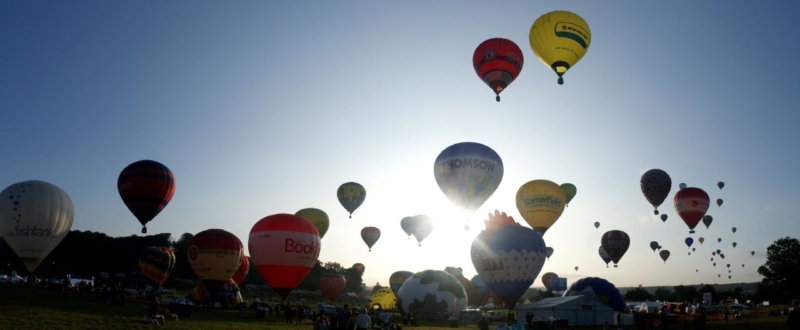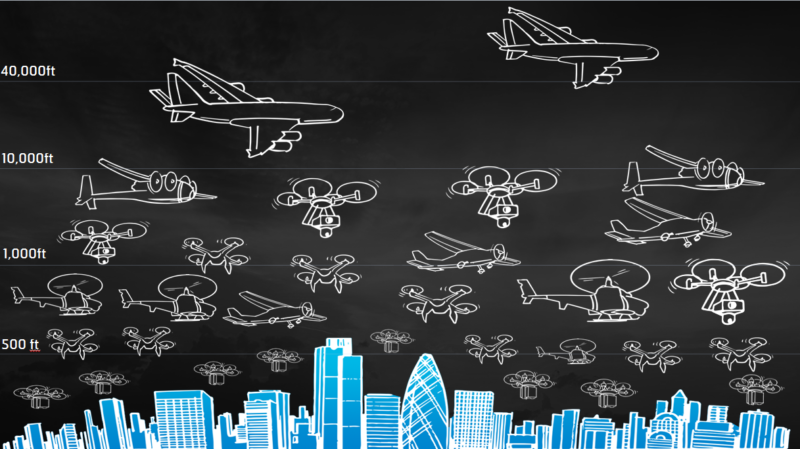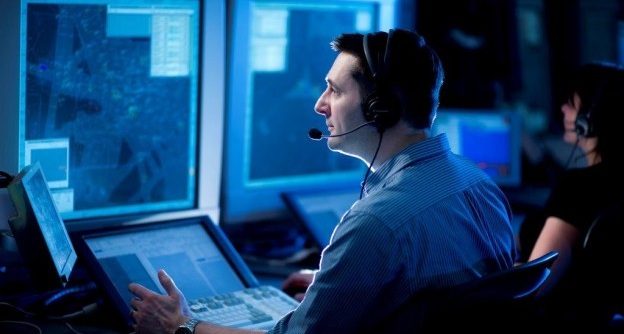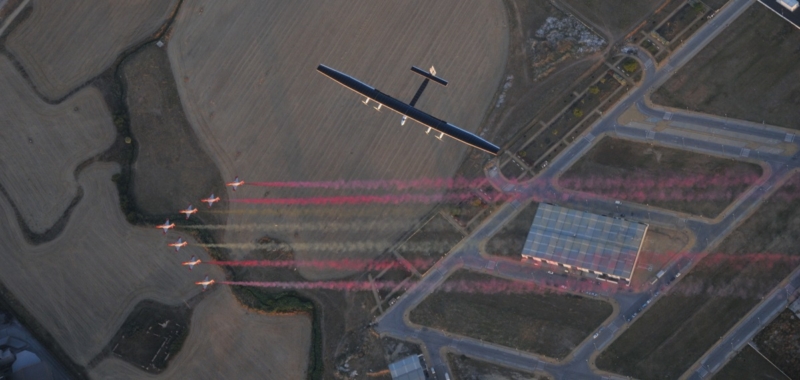Skies Above Britain – Bristol’s balloons and air traffic control
1 September 2016In last night’s episode of Skies Above Britain you will have seen the remarkable maiden flight of the world’s first hot air balloon heated entirely by solar energy.
But what’s the impact of hosting Europe’s biggest hot air balloon festival just a few miles away from Bristol International Airport? It’s so close in fact that we can watch the balloons gently rising from out of the control tower windows.
Every year the Fiesta welcomes 500,000 visitors over the four days with over 100 balloons taking part. And given its close proximity to Bristol Airport, we have to carefully plan and prepare for the occasion far in advance to ensure there is minimal impact to normal operations at the airport.
I’ve worked in the air traffic control tower at Bristol for the past 29 years, and have been responsible for overseeing the Fiesta preparation for around eight of those. There is a very active ballooning community around the airfield all year round, and as a team we have a lot of experience working with them. In fact, we have a piece of airspace to the north of the airport where balloons can be flown safely on a day-to-day basis. If balloonists want to fly outside of that airspace, they will call us for clearance, just like any other aircraft.
The Fiesta has grown dramatically since it first began in 1979 and each year can be slightly different because there may be changes to the fixed wing and parachute displays.As a general rule, the four key things we need to consider are: Ballooning; Fixed Wing Displays; Parachute Displays; Helicopters.
As a first step, we discuss the event schedule with the organisers so we can look at any special procedures that need to be put in place to accommodate the activities.
During the event we transmit what’s called an ATIS (Aerodrome Terminal Information Service) message that provides information on the event to pilots flying in and out of Bristol and within the local area.
A NOTAM is then published prior to the event that informs pilots of the activity and the CAA distributes an Airspace Coordination Notice (ACN) which includes details about any altitude restrictions, for example.
For the controllers at Bristol Airport, we publish a Temporary Operating Instruction (TOI) two weeks before the Fiesta; this sets out the specific preparation and procedures in place for air traffic controllers to follow.
On the morning of a balloon launch, the organisers will contact the tower Watch Manager to get the latest weather forecast – especially important if your balloon runs on solar power! Balloonists are then briefed by the event organisers on the prevailing weather conditions and the effect they may have on routes and places to land.
As you saw from yesterday’s episode it’s an incredibly busy event, with well over a hundred balloons launching around the same time, the first and last balloonists will contact the control tower so we know exactly when they start and finish. Generally the balloonists will operate below 2000ft. Any wishing to fly above this altitude will make a request and receive an individual clearance. This ensures that we can provide the correct separation distances and traffic information to commercial airlines.
Fixed wing displays are permitted to display within a two nautical mile radius of the Fiesta site and up to 2,500ft. They operate using Visual Flight Rules (VFR) and will call Bristol Approach (radar) when they are en-route. We keep commercial aircraft at least two miles clear of the landing site and 1,000ft above the display.
We manage and coordinate parachute displays so that they safely fit in with the airport’s operation and they can operate up to 5,000ft. A separation distance of at least three nautical miles as well as 1,000ft vertically is required for this.
Helicopters used as pleasure flights during the Fiesta are popular. These flights tend to stay in the local vicinity and stay within two designated routes no higher than 1,500ft.
Some of my colleagues take part in ballooning and from time to time we host visits to the tower for from local balloonists in order for them to gain a greater understanding of air traffic control as well as the importance of talking with us.
As a result of our experience other airport’s often consult with us on how we plan for this event.
It’s a pleasure to work on such a unique and famous balloon festival and I hope you get the chance to see it for yourself some day!
Comments
Please respect our commenting policy and guidelines when posting on this website.

![The world's first solar balloon [Image: Cameron Balloons]](https://i0.wp.com/nats.aero/blog/wp-content/uploads/2016/07/Solar-balloon-1024x707.jpg?resize=625%2C432)



